The Iranian "Infantry Support Vehicle"
The Boragh or Boraq (نفربر براق), the "winged steed" of islamic Mythology is today one of the many Armoured Fighting Vehicles in service with the Iranian Army with mixed origins and a national development, also underlying the very fragmented nature of the Iranian Ground Forces's equipments. Iran today had c1600 main battle tanks (10 models), and c3614 Infantry Fighting Vehicles and APCs (16 models), creating a maintenance and supply nightmare, moderated by the defensive nature of this park. If the bulk of their origins are ex-Soviet and Russian, the older are of British and US origins, and others are of Chinese origin. But apart the Sayyad AFAV and Zulfiqar MBT, truly national developments are rare. The Boraq could be one of these, at least partially.Resemblance of the Boraq with the BMP-1 arose some confusion about if the vehicle is a new built or a mere BMP-1 conversion, as Iran did used BMP-1s during the cold war and the Iran-Iraq war. It is hard to find how many were provided as they are not even reported as "BMP-1s" today but assimilated as Boragh. I that case 210 would be that number, but both the APC and BMP-1 are very different beasts. Other sources gives 300 in park. As late as 2023, Iranian border guards's BMP-1s clashed with the Talibans. Here a Guardian of the Revolution model.
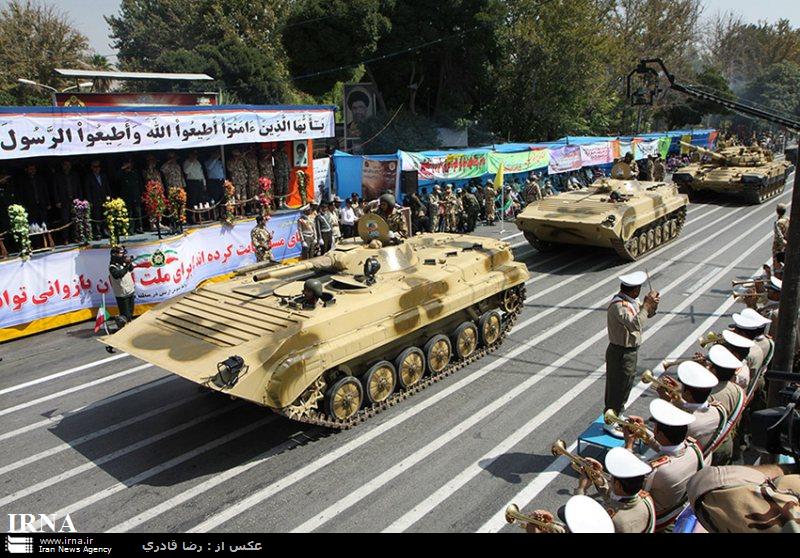
Iranian BMP-1s
Development of this armoured vehicle, classed as an armoured personnel carrier for experts, started in 1986, with various origin stories. The most prevalent was that a single Chinese Type 86 IFV, a chinese copy derived from the BMP-1 was tested in 1986, date of its first tests for the PLAN. It seemed it was throurghly trials and reverse-engineering, based not on the Chinese WZ501 but WZ503 which had instead of a turret, a shielded heavy machine gun. The first prototype was completed in 1987. The fact the APC version was copied simplified production, but in the end, since it was not a conversion but a new built, the vehicles had to be 100% manufactured in Iran, even though the main machine gun was Chinese. This meant a long tooling and new factory space needed.
This prototype underwent extensive trials, many defects found and corrected, producing improved second and third prototypes, in 1991. That year, the design was adopted. The first production Boraq however only were completed in 1997. In the meantime in 1991, Iran ordered to Russia a fleet of BMP-2s (400, many assembled in Iran). The Iranian Defense Industries Corporation specified the Boraq is an 'infantry support vehicle' which looks more towards IFVs than APCs in doctrine, although their light armament tells the contrary.
However the Boragh was later declined into multiple versions and diverging sources states 210 Boragh and 200 "BMP-1s" which is confusing. Some sources states that Iran only operates 140 as of today, which on a park of 410 vehicle is quite a few. Perhaps it's the substraction of all the variants (see below). Indeed wikipedia states in its equipment list some 410 vehicles total, with 240 turreted versions under the same name. To complicate things, Kazakhstan acquired 140 Iranian Boragh APCs in 2002-2005 and there are the 50 built for Yemen.
Design of the Boragh
General Design
The Boragh is not, as understood by experts, a mere copy-paste of the Chinese WZ 503 APC, as the Iranian engineers managed to upgrade it by reducing overall weight and improve performances, while improving protection. The general layout is full repeat of the Chinese design, with a base crew of three, the driver, commander and gunner. Only the first is located on the right side position with rear opening hatch, and a set of four vision blocks and a passive periscope for night driving. The commander has a projector. The gunner is located in the center of the vehicle, seated inside a light pannier.Behind and around him are located, down to the rear plate, the troop compartment. The original BMP-1 had only six seats, whereas the absence of a large turret pannier allowed to add two more, for eight infantry total, closer to a section. But they are not back to back centre facing outwards and rather on either side facing inwards. This enable greater cargo loading. They exit the vehicle via the rear doors, which like the original, are also fuel tanks. Unlike on the BMP-1 they have access only to a pair of hatches to fire while standing on the move but also pistol ports, three with roof-mounted day periscopes above. The left back door has a firing port and vision device.
Mobility
As far as mobility is concerned, the Boraq, a 12-13 tons machine (empty/fully loaded), 6.72 m long for 3.10 m wide and 1.66 m high posessed a V-8 diesel (front left compartment) of unknown type, probably copied from the Chinese one and manufactured locally, rated for 330 hp (246 kW) at 2,300 rpm which gives a Power/weight ratio of 25.4 hp/tonne (18.9 kW/tonne) for 65 km/h on road and 45 km/h off-road, 7 kph when swimming. Its Suspension comprises torsion bars, with the first two road wheels fitted with hydraulic shock-absorbers. Six main roadwheels, front drive sprocket, rear idler more of less close to the originals.The Boragh has a Ground pressure estimated between 0.48 kg/sm2 and 0.55 kg/sm2 and is also capable of climbing a 35% Gradient, 25% side slope, and gap a 2.3 m trech.
Detailed shapes of the teeth and spoke design varied both from the Chinese and original BMP-1. The most striking difference however is the use of M113 plain roadwheels instead of the BMP-1 cast model which was empty to ease buoyancy. Operational range is estimated 550 km and like the original, it had enough buoyancy to be fully amphibious, and is steered and propelled when swimming by its tracks. Trim vane is erected and the bilge pumps activated. Tracks are of the Chinese NORINCO Type 90 series with improved rubber pads, replaceable, and of two different types. Like the original it had three widely spaced return rollers.
Protection and armament
The Boragh's main armament consists of the Iranian-built 12.7 mm Dooshka, copy of the DShK 1938/46 12.7 mm heavy machine gun on rotatable mount, the most generally seen, or Chinese equivalent. The gun mount as shown in photo could be protected by an all around armoured shield of the same type as standard on Chinese AFVs. Apart this, it can catty up to 8 infantry soldiers, full equipped with personal weapons and RPGs or Manpads. See for versions below.As for the original, protection is light, made in all-welded steel armour, well sloped and angular, providing protection against 7.62 and 12.7 mm as well as shell splinters, but perhaps also 20 to 25 mm around as the nose received 18 mm of armour, which with the slope gave c30mm. it also have the collective NBC protection system with ventilation, and an infra-red night vision system.
There is also the usual smoke projection system added to the exhaust outlet (injection of diesel fuel), optional smoke dischargers at least on the APC. There are also fire detection and suppression systems. However, the most striking external giverway of the Boragh are its four-part rubber skirt hinging upwards to allow access to the suspension instead of the original BMP-1's light sheet steel cover. The design is unique, and they are providing a better protection against ATGMs and RPGs rounds.
Identified Variants
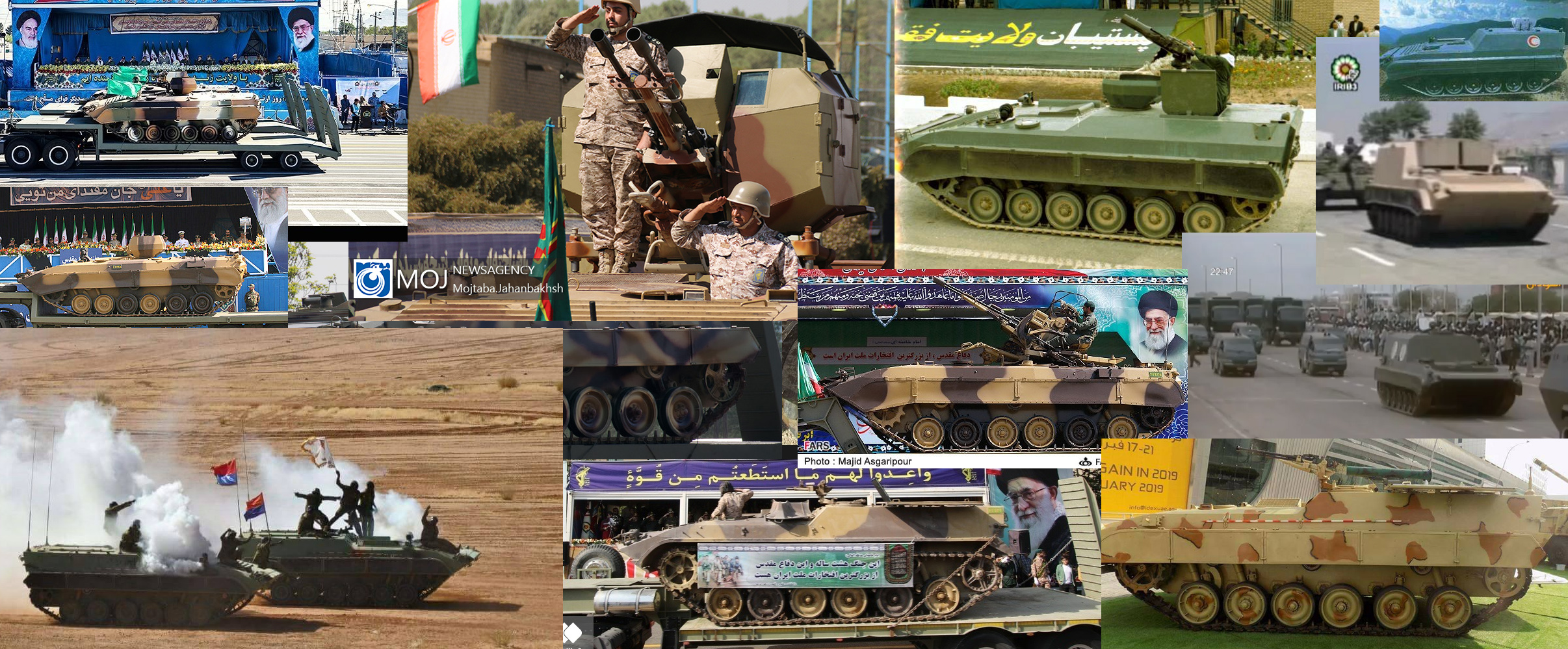
Boragh IFV
The IFV is equipped with a 2A42 30 mm autocannon, 2D stabilized, double-belt feed and as secondary a coaxial PKT 7.62 mm LMG. There is also an ATGM mount. It seems some photos shows Boraghs also with the full BMP-1, turret.Boragh Mortar (2002)
Variant armed with 120 mm mortar, raised rear superstructure, two-piece roof opening hatches. The portar has a 15x2° traverse, +43° - +86° elevation, 9,000 m range and power-operated ramp.Boragh SPAAG
The machine gun mount is replace by a bolted/welded on full ZPU-2 chassis and mount. The operator is normally unprotected, but more recently in parade were shown examples with a fully protecting shieling all around.Boragh AIFA (ATGM)
Antitank version: One-man open turret unlike on the WZ 504, with a single arm system for the Toophan ATGM system made by AIO, reverse engineered US Raytheon Systems TOW. The first version is a 3.6 kg HEAT (pen. 550 mm RHA) and Toophan 2, 4.1 kg tandem HEAT (pen. 760 mm plus ERA). SACLOS guidance, up to 3,850 m, 13 sec. flight. Missiles loaded via a roof hatch. Laser beam riding version Toophan 3/4 and new turret in development.Boragh Ambutank
Raised rear roof after the third road wheel axle, for greater internal volume, presumably four stretchers, 2-3 injured seated.Boragh Command
Using the same hull as the above, batallion or company command vehicle with long range radio sets.Boragh Supply
Using the same hull as the above, it is converted into an ammunition resupply vehicle. To carry 155 mm rounds for the Raad-2 and 122 mm rounds for the Raad-1 SPGs, raised crew compartment on the left with upper driver position and increased visibility. Open-topped cargo (tarpaulin cover), ramp, 4 tons payload.Boragh CEV
Engineering vehicle, announced officially, but no photos show, probably in development.Raad 1 (1996)
Tested in May 1996, 122 mm self-propelled howitzer "Thunder-1", prototype with 2S1 Gvozdika turret to develop the Raad-2 on the raised rear type Boraq chassis.Cobra
Prototype with twin 23 mm anti-aircraft gun, fully turreted to be used as fire support vehicle.Khatim
Sudanese designation for Boragh. The Khatim 2 houses is the raise roof mortar variant.Operations & Exports
The Boragh was also proposed for export with an upgraded armour package "Iran has developed an enhanced composite armour package for the Boraq APC that can be rapidly fitted on the front of the hull to provide protection against 30 mm armour-piercing (AP) attack. The original vehicle only provided protection against heavy machine gun fire over the frontal arc. The Boraq shown in Abu Dhabi in early 2003 was also fitted with a locally produced air conditioning system. " Sudan – 10 ordered in 2001 from Iran and delivered in 2003.[11] Some domestically assembled.[1]Links/src read more
army-guide.commilitarytoday.com
premium.globalsecurity.org
oryxspioenkop.com handbook Iranian AFVs
the oryx handbook of iranian FVs
oryxspioenkop.com sudan vehicles
militaryfactory.com
army-technology.com
facebook.com
en.wikipedia.org
Gallery

Iranian BMP-1 as of 2020
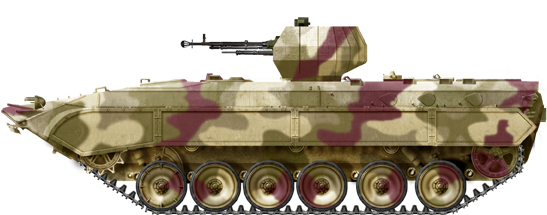
Boragh seen in parade, 4-tone northern camouflage
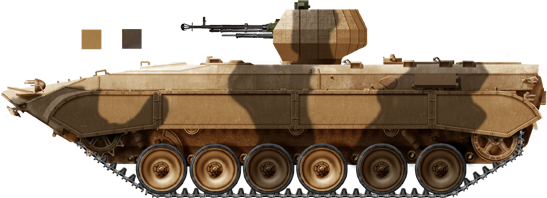
Boragh seen in parade, 2-tone southwest camouflage
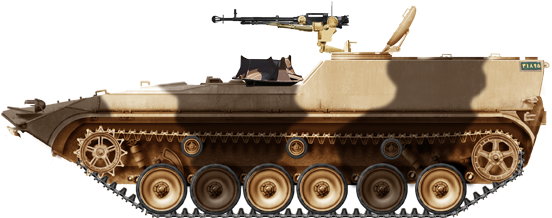
Mortar carrier
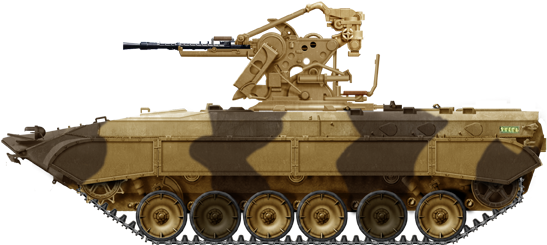
SPAAG variant
(More to come)
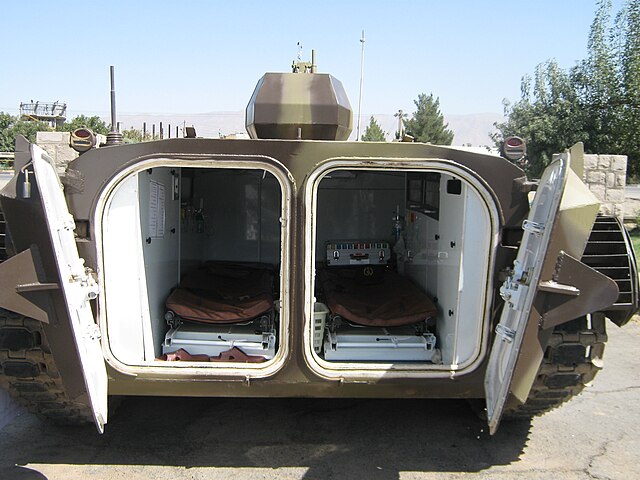
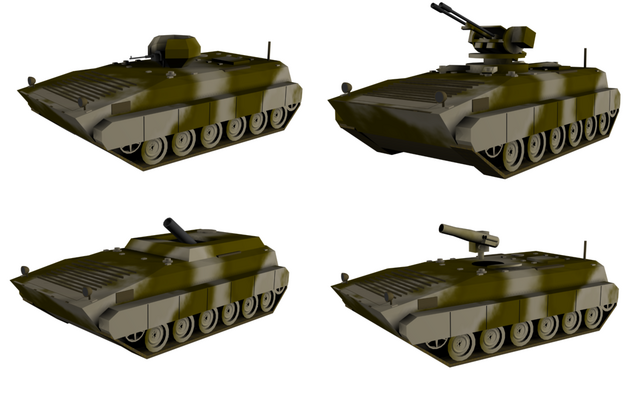
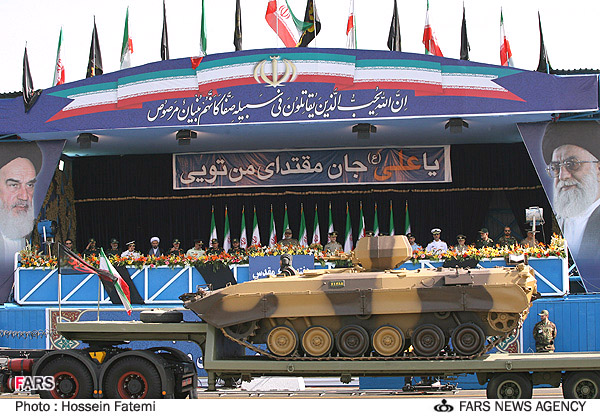
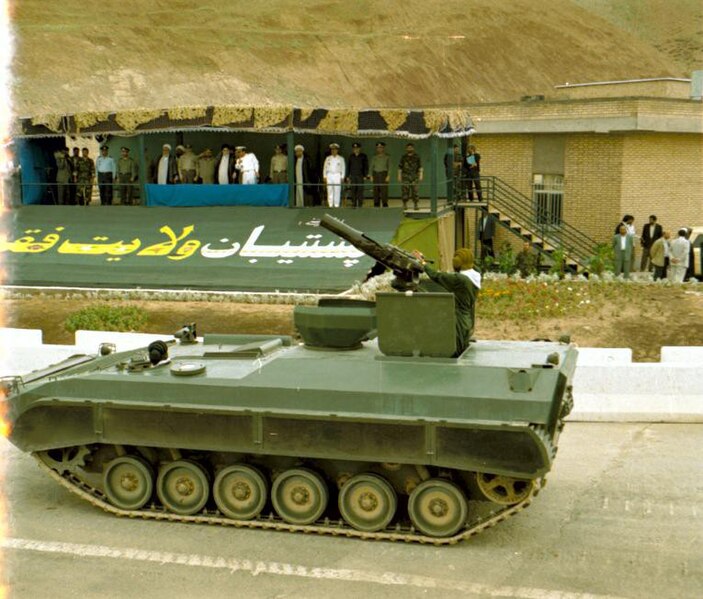
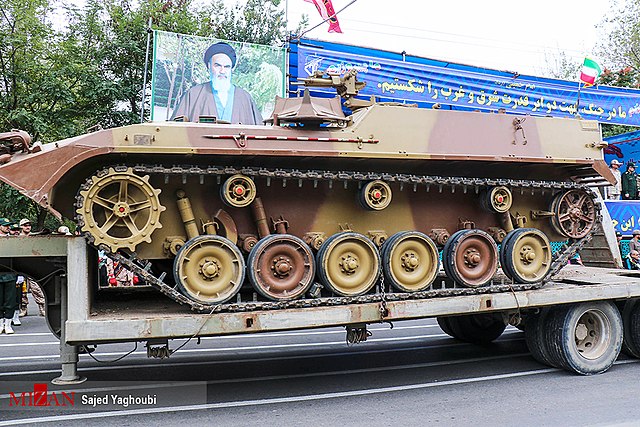
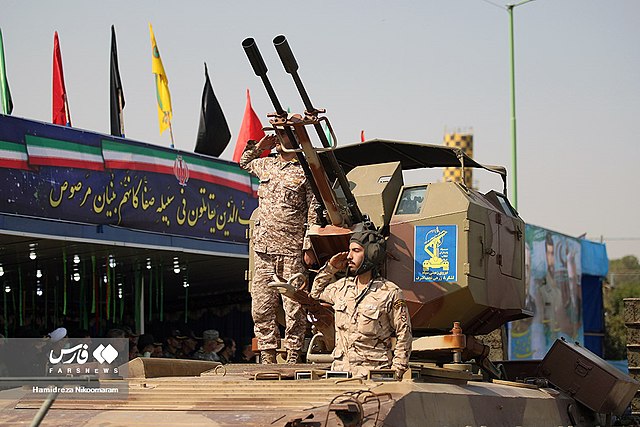
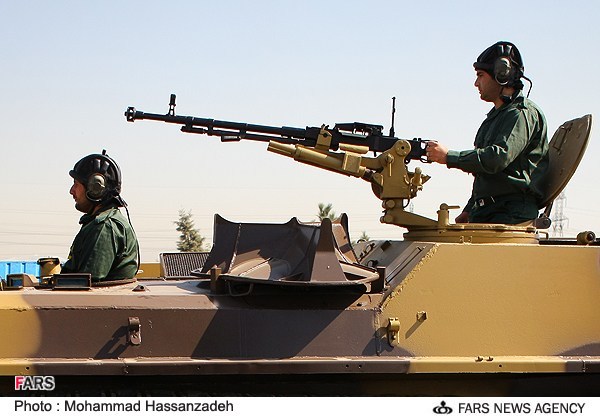
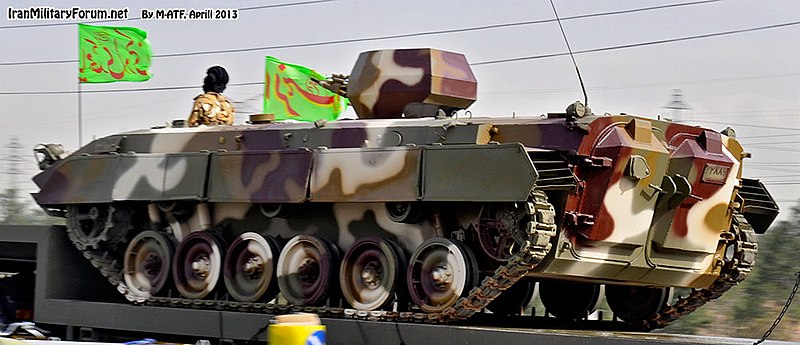
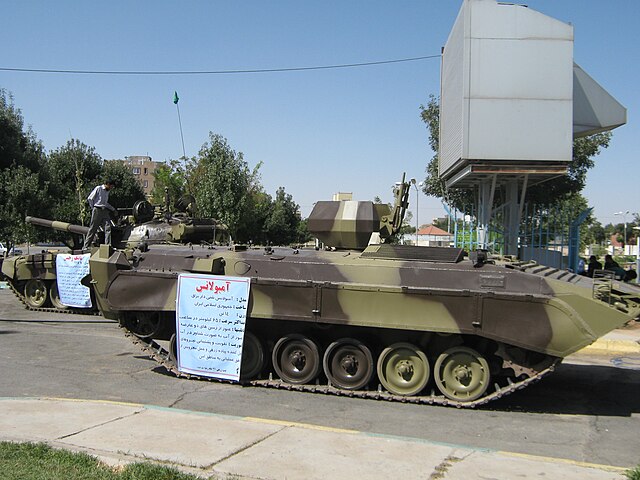
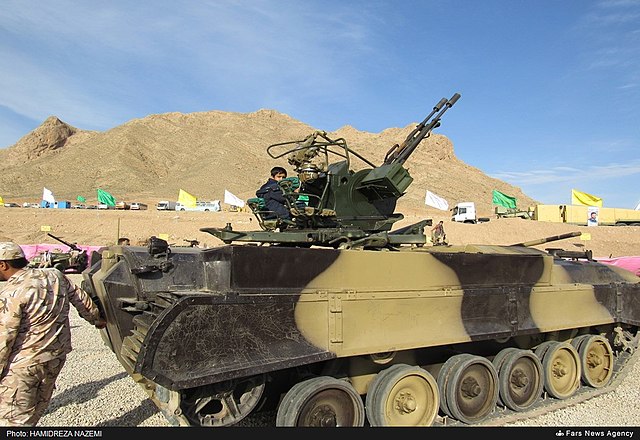
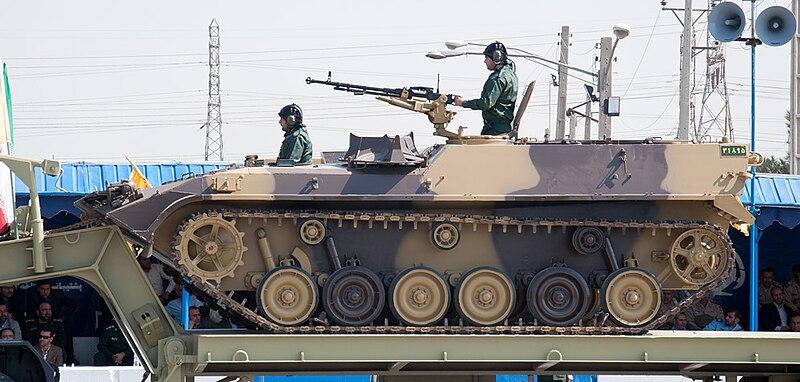
 Based on shortened boragh or lenghtened Sayyad chassis, the "Tuyin quick reaction tank" armed with a Cascavel turret.
Based on shortened boragh or lenghtened Sayyad chassis, the "Tuyin quick reaction tank" armed with a Cascavel turret.
 BMP-2 Zoljanah with lightweight 30 mm autocannon Raad 2 unmanned turret for the Makran IFV. Probably fitted also with the Almas missile and another version fires the Sadid 365.
BMP-2 Zoljanah with lightweight 30 mm autocannon Raad 2 unmanned turret for the Makran IFV. Probably fitted also with the Almas missile and another version fires the Sadid 365.









































